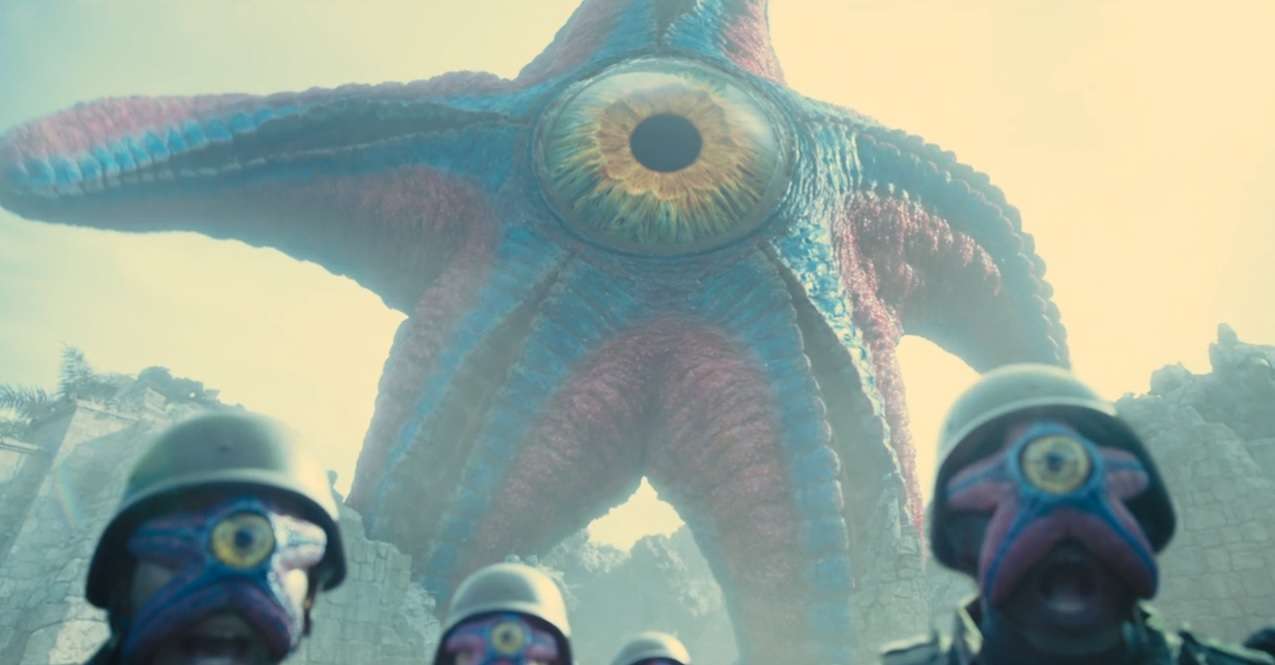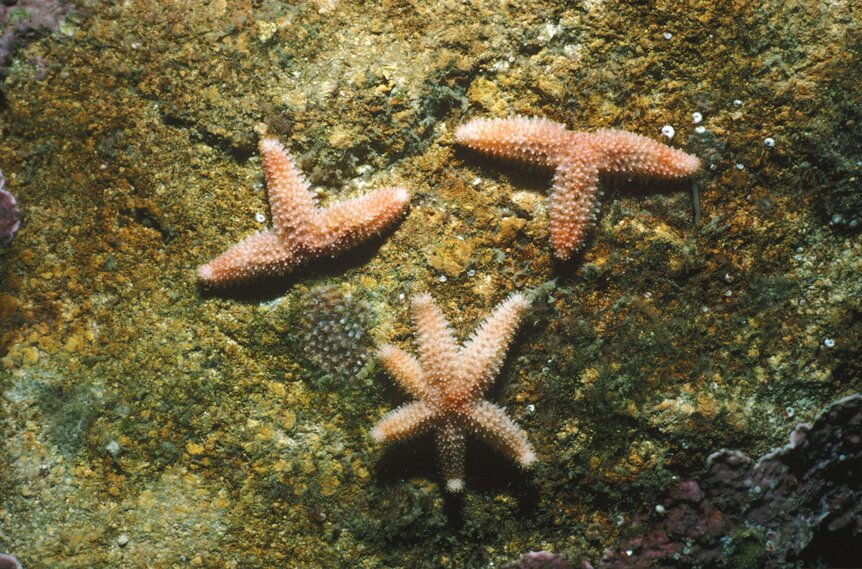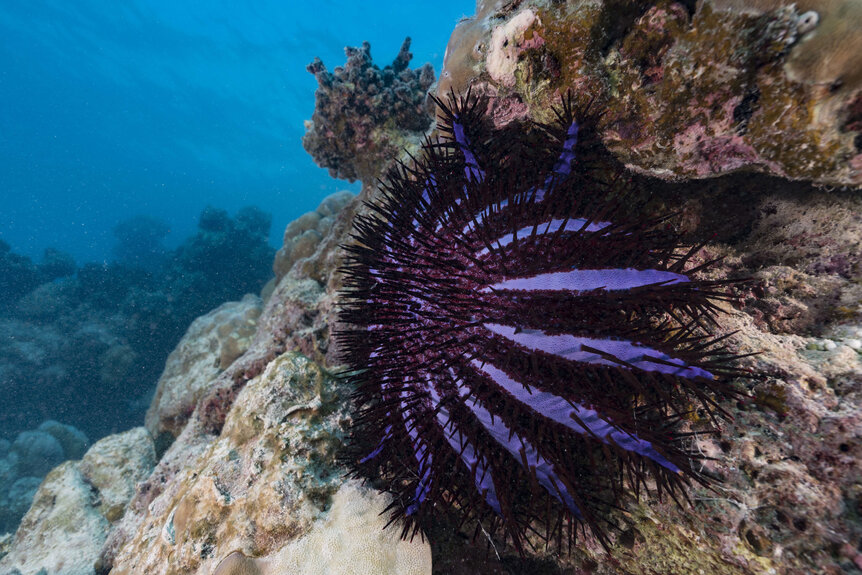Create a free profile to get unlimited access to exclusive videos, sweepstakes, and more!
The potentially wicked superpowers of starfish: The science behind The Suicide Squad

From anthropomorphic weasels to interdimensional viruses, there’s plenty that’s weird about James Gunn’s The Suicide Squad. Perhaps we shouldn’t be surprised, given that this is the guy who brought us Slither, and whose last superhero team-up film involved a raccoon and tree who are best friends. Still, Gunn ups the ante in The Suicide Squad with one of DC’s oldest and most bizarre villains: Starro, an oversized cosmic starfish with a giant eyeball at its center.
There are no space-faring sea stars with mind control abilities in the real world (so far as we know) but starfish do have some pretty incredible abilities, like…
EYESIGHT
While starfish don’t have giant, soul-piercing eyeballs peering from their centers, they do have eyes of a kind. At least, most species do. Scientists have known for about 200 years that some starfish possess compound eyes at the end of each arm. What was unclear, however, was if these eyes were capable of image formation or influencing starfish behavior.
Over the last several years, researchers have observed starfish behavior as it relates to navigating coral reefs. They’ve found the compound eyes of starfish are primitive, with low spatial resolution, but more useful than previously believed. In the study, starfish were removed from their home reef and relocated. Those who were near enough to the reef that it comprised of more than 30 vertical degrees within their visual field were able to navigate back home. This suggests not only that the eyes are capable of light detection but can form true images.
Further study by Ronald Petie, Anders Garm, and Michael R. Hall showed that blinded starfish were unable to navigate back to the reef, suggesting they are not using alternative sensory information, such as scent, for navigation.
Starfish eyes represent the most advanced visual system observed in echinoderms (starfish, urchins, sand dollars, etc.) and are all the more impressive because starfish don’t have a well-developed central nervous system. Instead, it appears the visual information is processed directly in the eyes themselves. That decentralization of nerves and vital organs becomes increasingly useful for the next starfish ability.
REGENERATION AND CLONING
All animals have some sort of “healing factor,” even you, dear reader, but sea stars are pretty high on the list when it comes to regeneration. There are likely a couple of reasons starfish are capable of such robust regeneration. First, they have comparatively simple body plans, as compared to something like a human being. So the task isn't quite as complex as it otherwise would be. Also, as mentioned above, starfish have redundancy in vital organs, with each of the limbs, or rays, housing most or all of the necessary components, depending on species.
Most important of all, starfish are capable of high levels of cell differentiation, even in adulthood. Simply put, they either retain stem cells or are able to de-differentiate mature cells back into stem cells. The result, as long as an individual animal still has enough of the body, is that they can regrow the missing parts. How much of the body is needed, depends on the species.
Most commonly, an injured starfish missing one or several limbs is capable of regrowing the lost limbs. After an injury, a new limb spawns from the central disc, small at first, then growing larger. This process can take a year or more to complete. In some species, the central disc is required for limb regeneration. A near-complete animal is capable of regrowing a lost limb, but the lost limb is not capable of regrowing the rest of the body.
In other species, however, even the latter case is possible. A severed limb containing even a small piece of the central disc can regrow a new body, resulting in two genetically identical starfish. There are even some species in which retention of the central disc isn’t required at all.
In fact, some starfish naturally reproduce this way, intentionally splitting themselves at the central disk, which then regrows the missing parts. Research indicates that starfish which reproduce this way have higher longevity than those who reproduce sexually.
Starro’s ability to pop out little copies of itself is wholly possible, given a little patience and an inclination toward evil. Speaking of which…
VICIOUS STARFISH
Starfish seem, on the whole, docile and peaceful creatures. They hang out on the seafloor, not doing much of anything except looking cool and apparently watching us as we snorkel past. The reality is they are predators. They subsist primarily on clams, mussels, and oysters, using the suction cups (tube feet) on their arms to pry shells open before extruding their stomachs from their bodies and consuming their prey.
Some species are, of course, more vicious than others. If we’re looking for an Earth-based counterpart to Starro, there are a couple of options, but none better than the crown-of-thorns starfish.
Its vibrant coloring and spiny covering make it look like the sort of cosmic horror you might find in the pages of a comic book. These are one of the largest starfish species, reaching up to 80 centimeters in diameter, and are covered in poisonous spines, from which they derive their name.
They move across coral reefs, feeding on stony coral. They feed in the usual way, by extending their stomachs outside of their bodies. Digestive enzymes liquify the coral's soft tissues until all that’s left is the limestone skeleton. They quite literally strip the meat from their prey's bones. An individual can consume between 5 and 13 square meters of coral each year with outbreaks occurring in which groups of starfish consume coral faster than it can grow.
We should avoid imbuing non-human animals with human moral constructs, but if ever there were a starfish capable of one day becoming an interstellar conqueror, the crown-of-thorns might be it.





























